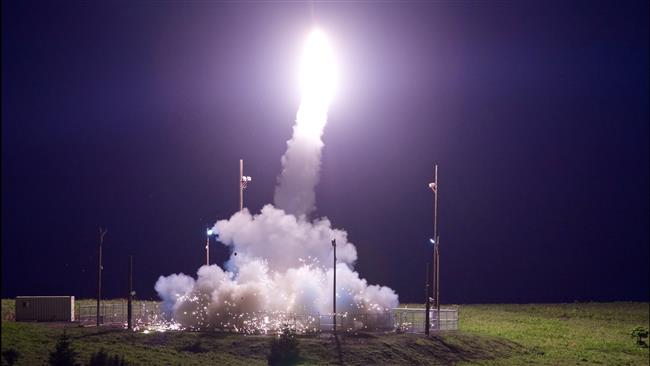
RNA - In a report, Reuters cited defense experts as saying that the purportedly successful tests that the Pentagon conducted earlier do not accurately simulate the real wartime conditions, despite spending $40 billion over research and development within a period of 18 years.
On May 30, the US Missile Defense Agency (MDA) conducted 10 successful tests out of 18 attempts of the Ground-based Midcourse Defense (GMD) system.
The GMD is a network of radars, anti-ballistic missiles and other equipment aimed at protecting the US from intercontinental ballistic missiles (ICBMs).
While the GMD tests took place in daytime to intercept a single missile, experts say the conditions do not match scenarios for possible missile attacks from North Korea.
In an interview with Reuters published on Thursday, Riki Ellison, the chairman of the Missile Defense Advocacy Alliance, stressed that the GMD needs more strenuous tests against threats such as multiple warheads that use devices to confuse missile defense systems.
Physicist Laura Grego, who studies missile defense at the Union of Concerned Scientists, says the publicly available data cannot confirm the Pentagon's assessment that the GMD worked effectively under realistic testing conditions.
The latest test failed to consider the possibility of Pyongyang using complex countermeasures and decoys to confuse the anti-ballistic missile's "kill vehicle."
Kill vehicle pops off the top of the defending missile above the earth's atmosphere and tracks and destroys the warhead of the attacking missile.
Decoys and countermeasures confuse the kill vehicle to make it target the wrong object and allow the real warhead pass toward its objective.
The Pentagon plans to conduct the next GMT test in 2018 which aims to intercept multiple inbound warheads, instead of a single one.
The debates over the effectiveness of the US missile system come against the backdrop of an exchange of threats between US President Donald Trump and North Korean leader Kim Jong-un.
Tensions over North Korea escalated in July, when Pyongyang twice successfully tested an intercontinental ballistic missile (ICBM) capable of targeting the US mainland.
On Wednesday, North Korea said it was considering plans to launch missile attacks on the US Pacific territory of Guam, hours after Trump warned Pyongyang that Washington would respond to any threats with "fire and fury."
Trump issued a new threat against North Korea on Friday, saying American weapons were "locked and loaded" after Pyongyang accused him of driving the Korean Peninsula to the brink of nuclear war.
Guam emergency tips to residents
On Friday, Guam's Office of Civil Defense disseminated fliers to help residents prepare themselves for a possible North Korean attack. The fact sheets include guidelines on making emergency kits, taking cover in concrete or brick structures and removing radioactive material from skin.
"Do not look at the flash or fireball — it can blind you," the fliers, titled "Preparing for an Imminent Missile Threat," say.
According to Guam Governor Eddie Calvo, officials have not raised Guam’s threat level even after Pyongyang laid out plans to strike near the island in the coming weeks.
847/940